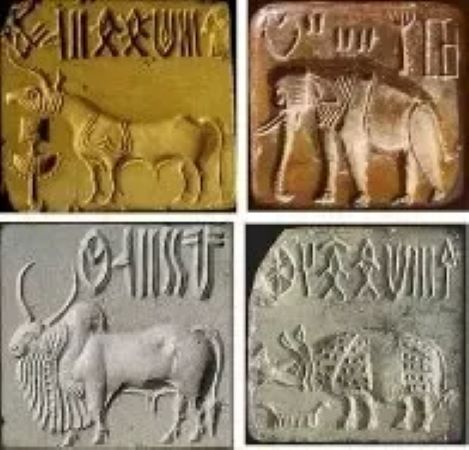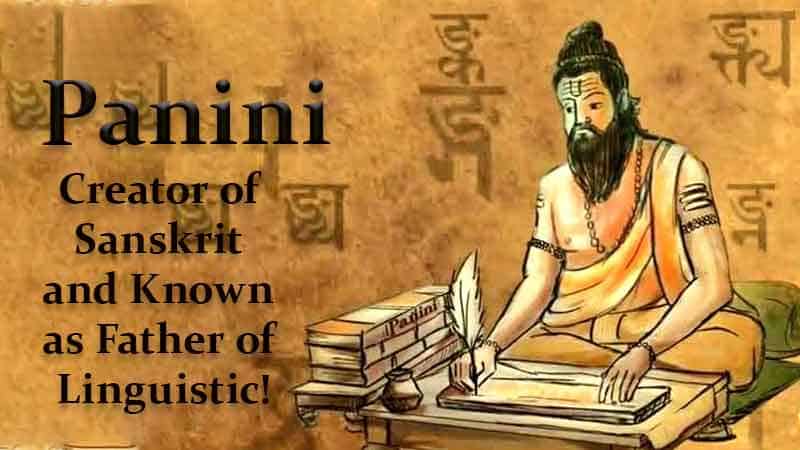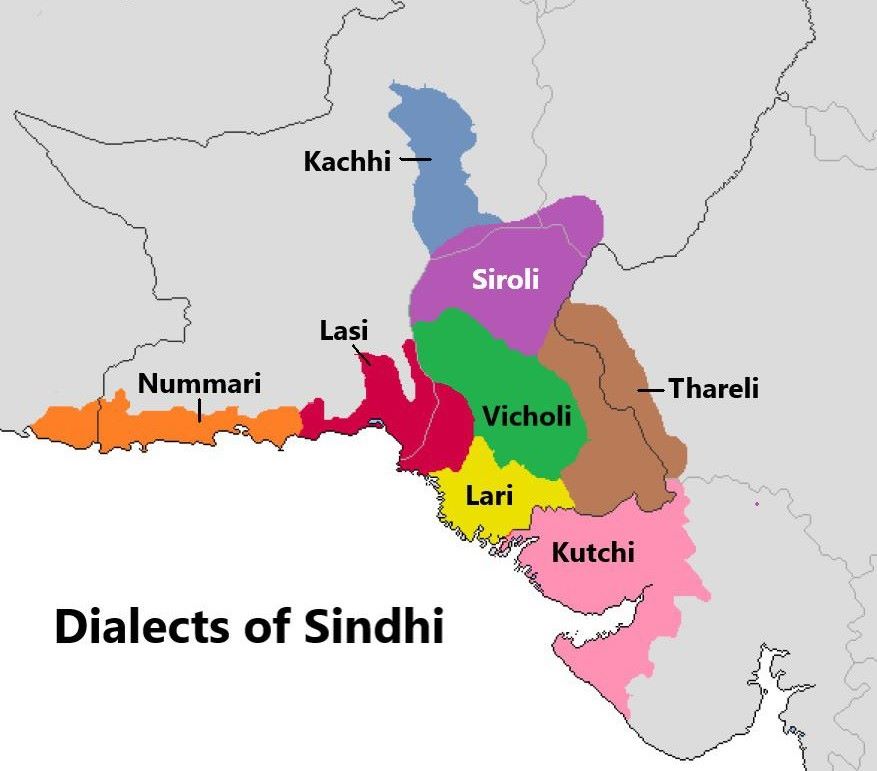
The article deals with the documental ancientness of Sindhi Language, especially with reference to proto-Dravidian languages, Dravidian languages, Vedic culture and Panani’s Grammar of Sanskrit
Aziz Kingrani
Abstract
The paper deals with the documental ancientness of Sindhi Language, especially with reference to proto-Dravidian languages, Dravidian languages, Vedic culture and Panani’s Grammar of Sanskrit. It has been endeavored to trace the roots or connections of Sindhi Language with Proto-Dravidian and Dravidian languages of Indus Valley Civilization as well as Indus Script. It has also been strived with historical knowledge, backgrounds and inheritance that Sindhi language might have linked with un-deciphered Indus Script. The attempts have been made to prove with historical and archaeological record that Sindhi language remained rich from proto Dravidian period. The paper aims to discuss the parallel evolution of Sindhi language with Sanskrit language through an analytic study of both the ancient languages.
 Inevitably, being a language of Elite Class preference was given to Sanskrit language. Consequently every sort of oral literature was narrated in the (holy) Sanskrit language. Meanwhile Sindhi remained a second language (of common people) throughout the centuries which resulted the disappearance of the continuous roots and links of Sindhi language and its gradual disconnection with the Proto-Dravidian languages Dravidian languages of the Indus Valley Civilization as well as Indus Script. The violence and political hegemony of Aryans demolished and uprooted the links between the Vedic Sindhi language, Dravidian languages and the Proto-Dravidian Sindhi language. So many words of Proto Dravidian and Dravidian Language are prevalent in Sindhi yet. Most probably, Sindhi is a Dravidian Language but later on after the dominance and influence of Aryan languages, the Persian and Arabic languages, Sindhi has been included in the Indo-Aryan group of Languages.
Inevitably, being a language of Elite Class preference was given to Sanskrit language. Consequently every sort of oral literature was narrated in the (holy) Sanskrit language. Meanwhile Sindhi remained a second language (of common people) throughout the centuries which resulted the disappearance of the continuous roots and links of Sindhi language and its gradual disconnection with the Proto-Dravidian languages Dravidian languages of the Indus Valley Civilization as well as Indus Script. The violence and political hegemony of Aryans demolished and uprooted the links between the Vedic Sindhi language, Dravidian languages and the Proto-Dravidian Sindhi language. So many words of Proto Dravidian and Dravidian Language are prevalent in Sindhi yet. Most probably, Sindhi is a Dravidian Language but later on after the dominance and influence of Aryan languages, the Persian and Arabic languages, Sindhi has been included in the Indo-Aryan group of Languages.
Introduction
Sindh land is most ancient on the globe created by Indus River. How and in which era this land was named Sindh? There are many hypothesis and opinions but some modern research scholars are of the opinion that Sindhi is proto Dravidian language (Motwani: 2011:57). Sindh word is Dravidian (Brahui: 2017:40). As Sindh land is ancient, Sindhi language also can be considered most ancient language as well. The ancient documental evidences, historical and archaeological findings prove that Sindhi language prevalent in proto Dravidian period. Sindhi language is not derived from Sanskrit but it is one of the ancient languages of the Indus Valley Civilization of pre-Sanskrit era (Bralvi: 1986: 47). There are four theories about the origin of Sindhi, three of which explored its roots in the Indo-Aryan system. However, the remaining one insisted that today’s modern Sindhi was derived from the Proto-Dravidian system with other Dravidian languages and the Indo-Aryan system as a whole as its sisters (Mansoor: 2017).
 There are so many examples of Dravidian and Proto Dravidian words in present Sindhi language which provide evidences that Sindhi language was spoken during Indus Valley Civilization era as well as before it up to 4th millennium BCE (3300 BCE) which can be called proto Dravidian period. It is more ancient than Sanskrit of Vedic culture. These proto Dravidian and Dravidian words have been mentioned with meanings in the book “The Dravidian languages” by Bhandriraju Kirshanamorti. Some examples of Proto Dravidian and Dravidian words are given below:
There are so many examples of Dravidian and Proto Dravidian words in present Sindhi language which provide evidences that Sindhi language was spoken during Indus Valley Civilization era as well as before it up to 4th millennium BCE (3300 BCE) which can be called proto Dravidian period. It is more ancient than Sanskrit of Vedic culture. These proto Dravidian and Dravidian words have been mentioned with meanings in the book “The Dravidian languages” by Bhandriraju Kirshanamorti. Some examples of Proto Dravidian and Dravidian words are given below:
1) ‘Kã-wati’ – in Sindhi language it is still prevalent as ‘Kanwaati’ (ڪنواٽي) (Kirshanamorti: 2003:P_9). (On a shoulders by pole with rope fastened to both ends container on each). The depicted load bearer on Indus Script seals as load bearer can be considered as (Man with Kanwati) which indicates to relation of Sindhi Language with Indus Script as well.
2) Kun-tãl. With little phonetic change it is in Sindhi language as ‘Kodãr'(ڪوڏر), pick -axe, tool for digging (Krishnamorti: 2003: p-9).
3) Katti-i , in modern Sindhi language it is prevalent as ‘Kaati’ (Knife,ڪاتي), (Krishnamorti: 2003: p-9)
4) ‘Bhanda’ (goods, ware), it is in Sindhi language as ‘Bhando’ (ڀانڊو) singular and ‘Bhanda'(ڀانڊا) plural (Kirshanamorti: 2003: p-9).
5) ‘Patti’ tool for measure (grain). It is ‘Paati'(پاٽي) in Sindhi language with little phonetic change for measuring grain (Kirshanamorti: 2003: p-9).
6) ‘Awa’ / ‘Awan’, Sindhi ‘Awhaan’ (اوهان) means you (kirishnamurti: 2003: 49).
7) ‘Wir-i,’ ‘Viri-i’, space, some open (in wall), conflict same as prevalent in sindhi. ‘Wiri’, ”Viri’ (وِيري) and its synonym is ‘Withi’ (وِٿي) in sindhi. (Kirishnamurti: 2003:190).
8) Cutt-u (Katt-u) (to cut) same in Sindhi Cutt-u (ڪَٽُ، جهير، ڪٽڻ) means to cut, (Kirishnamurti: 2003: p-43)
9) ‘Kure Kure’ (calling dog, ڪُور ڪُور) is as it is in Sindhi language (Parpola: 2015:283).
10) ‘Kana’ (blind from one eye or one eyed) in Sindhi ‘Kaano’ (ڪاڻو) singular, ‘Kaana’ (ڪاڻا) plural (Parpola: 2015:283). (Kirishnamurti: p-6)
11), ‘Papa’ a sinful being (snake), a sin, (Krishnamurti: p-2), Sindhi ‘Paapu’ (پاپُ، ڏوھ)
12), ‘Vair’ (‘vairu’), enmity, ‘Vairi’ enemy (Kirishamurti: p-2) in Sindhi ‘Vairu’ (ويرُ، دشمني), (Vairi) in Sindhi enemy (ويرِي).
13), Kot-ay, (fort, fortress), (Kirishnamurti): p-8), Sindhi ‘Kot’ (ڪوٽ، قلعو).
14), Attu, (flour), (Kirishnamurti:p -10), Sindhi ‘Atto’ (اٽو)
15), ‘Mama’, (father’s sister’s husband, mother’s brother (Kirishnamurti: p-10), Sindhi ‘Mamo’ (مامو).
16), ‘Amma’ (Mother), (Kirishnamurti: p-10), Sindhi ‘Amman’ (امان).
On other hand, since the Indus Valley civilization has been discovered, the scholars have discussed the linguistic individualities of its (IVC) people. The analytic study by scholars in the light of many archaeological, linguistic, archaeogenetic and historical indications have claimed that the words used for elephant (like, ‘pīri’, ‘pīru’) in Bronze Age Mesopotamia, word used for elephant in the Hurrian part of an Amarna letter of 1400 BC, and the ivory-word (‘pîruš’) recorded in certain sixth century BC old Persian documents, were all originally borrowed from ‘pīlu’, a Proto-Dravidian elephant-word, which was prevalent in the Indus valley civilization, and was etymologically related to the Proto-Dravidian tooth-word ‘pal’ and its alternate forms (‘*pīl’/‘*piḷ’/‘*pel’). (Asumal: 2021: 8,193). In Sindhi language it is also prevalent ‘Pilu Pau’ as phrase which means ‘power’ or powerful. In Arabic it is ‘feel/feal’ (فِيل) and in Persian ‘Pilu’ (Asumal: 2021:8, 193).
As for as Indo-European languages, the word “Andho” (blind) of Sindhi language is included with same meaning in “The American heritage dictionary of Indo European roots” (Watkins: 2000: 04). This dictionary was originally published in 1985. This indicates that Sindhi language was not only one of the main languages of earliest period and Indus Valley Civilization but it widespread in Europe (as Dravidian and proto Dravidian language) like Sanskrit and loaned words to European languages as well.
In Rig Veda the loaned words of Dravidian language are too included. The loaned words are used in Rig-Veda show that words are borrowed from other language and those have been called loaned words by scholars. The loaned words included in Rig-Veda are: ‘Pipru’ (Pipal tree), raja (King), (Singh: 2009:187), ‘phalu’ (fruit ), ‘Khara’ (Kharu), I think it means enemy, ‘Kiri’ (abstention), kirir (kind of tree) ‘Kul’ or ‘kala’ (whole or complete, machine), Kunaru (lame in arm and also a pot for water as well), kano plural kana plural (blind in one eye), kunda or koonda singular Koondo (a Pot), nala (nalu or naru) (reed or pipe), Mayur ( Morr, peacock), Danda, singular Dando (stick), bila or biru (hole, cave), katu (Cutt-u) to cut or may be Khato (bitter or sour and Catt-u given above to cut), ‘bala’ in Sindhi ‘baru’, means force. (Natarajan:2018), ‘mrg’ (Mirg’ ) (now ‘mirgh’, deer) and ‘nag’, now nangu means snake (FBJK: 1979: xxi) are also prevalent in Sindhi language up till now which help us to believe that being Dravidian language, these loaned words are of Sindhi language which existed in Vedic period parallel to Sanskrit.
 The above loaned words included in Sanskrit or Rig-Veda, being a Dravidian language, surely belong to Sindhi language. If it is incorrect then question arises that from which Dravidian language these words had been loaned or barrowed and were used in Rig-Veda? Definitely, these loaned words belong to Dravidian language, especially to Sindhi language. And it is clue to consider Sindhi language as Dravidian language. The loaned words of Sindhi language in Rig-Veda also confirm the roots of Sindhi language in Vedic period.
The above loaned words included in Sanskrit or Rig-Veda, being a Dravidian language, surely belong to Sindhi language. If it is incorrect then question arises that from which Dravidian language these words had been loaned or barrowed and were used in Rig-Veda? Definitely, these loaned words belong to Dravidian language, especially to Sindhi language. And it is clue to consider Sindhi language as Dravidian language. The loaned words of Sindhi language in Rig-Veda also confirm the roots of Sindhi language in Vedic period.
Related article: Sindhi and Dravidian Languages: A comparative Study
The Astadhyayi (Grammar) of Panini (Pani) contains such compound words as lipikara (‘Lipikar’, who knows alphabet) or libikara (derived from ‘Lipi’ (Alphabet) with little phonetic change it evidently means a writer. The date of Panini is not fixed but some scholars want to place it in the eighth century BCE, generally some fix it in 4th century BCE. Epics contain archaic expressions (of Sindhi language), such as ‘likh’ (write), lekha (Wright-up), ‘lekhaka’ (‘Lekhak’. writer) ‘likhana’ (‘Likhanu’ means to write). The latter epic period in South Asia, especially in India is roughly counted from 1000 BCE to 6oo BCE (Jayapalan: 2008:18). Sindh and Indus River are mentioned in both epics, ‘Ramayana’ and ‘Mahabharata’ (Harjani: 2018). In the 4th century BCE Buddhist canons were composed in which ‘Lekha’ (‘lekh’ means Wright-up) and ‘lakhaka’ (‘Lekhak’ means writer) are included in the Bhikkhu pacittiya 2, ii and the Bhikkhuni pacttiya 49 ii (Shastri: 1987: 5-6) which are common words in Sindhi language. Above all words might have in Sanskrit as loaned words but these are also in stocks of Sindhi language until now.
Conclusion
Obviously, three main evidences have been described and comprehensively discussed. One, Sindhi language existed during proto Dravidian phase, second Dravidian era and third during Vedic period. Evidently, the documental ancientness can be proved through above done discussion. The words of Sindhi are documented in Rig Veda and Panani’s grammar. Moreover, Dravidian word ‘Kawnaati’ can be considered to link with load bearer, a symbol of Indus script. Most probably, during the period of Mohenjo Daro Civilization load bearer might have called ‘Kanwaati’. Whereas, the variance or variant in shape of a symbol of load bearer on seals, shows that possibly in cities and towns of Indus Valley civilization there were different kinds of load bearers (Kanwaatis) for different loads. However, the deep analytic study would open the door for further documental ancientness of Sindhi language counting for deciphering and connecting Indus Script with Sindhi language
References
1, Motswana Jagat K, 2011, none but India (Bharat) is cradle of Aryans, Sanskrit, iUnierse
2, Brahui Shakir Nazar , 2017, Quarterly Mihran, Sindhi Adabi Board Jamshoro, p-40
3, Baralvi Syed Mustafa Ali, 1986, education press Karachi, p-47
4, Mansoor Hassan, 2017, Daily Dawn Karachi
5, Kirshanamorti Bhandriraju, 2003, Dravidian languages, Cambridge University, 2003ISBN1139435337, 9781139435338
6, Parpola, Asko, 2015, the roots of Hinduism, Oxford University, p-283
7, Ansumal Mukhopadhyay, B. Ancestral Dravidian languages in Indus Civilization: ultra-conserved Dravidian tooth-word reveals deep linguistic ancestry and supports genetics. Humanit Soc Sci Commun 8, 193 (2021). https://doi.org/10.1057/s41599-021-00868-w
6, Singh Upender, 2009, A History of Ancient and Early Medieval India, p-187
7, Winters Clyde, November 2012, Dravidian is the language of the Indus writing, Current Science volume 103
8, Natarajan C.S, 2018, A Solution to the National Language Problem of India, Notion press, ISBN: 9781948147149, 1948147149
9, FBJK, 1997, Sammlung, Rodopi, ISBN9042002352, 9789042002357
10, Jayapalan N. 2008, Economic History of India, Atlantic Publishers & Distributors
ISBN: 9788171568383, 8171568386
11, Harjani Dayal N, 2018, Sindhi roots and rituals part-2, Notion Press
ISBN: 9781642494808, 1642494801
12, Shastri, Bhattacharyya Gaurinath, 1987, A Concise History of Classical Sanskrit Literature, ISBN: 9788120800274
____________________
 Aziz Kingrani, hailing from village Haji Manik Kingrani, Johi, Dadu District, Sindh, Pakistan, is poet, short story writer, playwright and a researcher. He has been contributing in the fields of history and literature. He has served as a professor as well. His 17 books are published in English and Sindhi language.
Aziz Kingrani, hailing from village Haji Manik Kingrani, Johi, Dadu District, Sindh, Pakistan, is poet, short story writer, playwright and a researcher. He has been contributing in the fields of history and literature. He has served as a professor as well. His 17 books are published in English and Sindhi language.